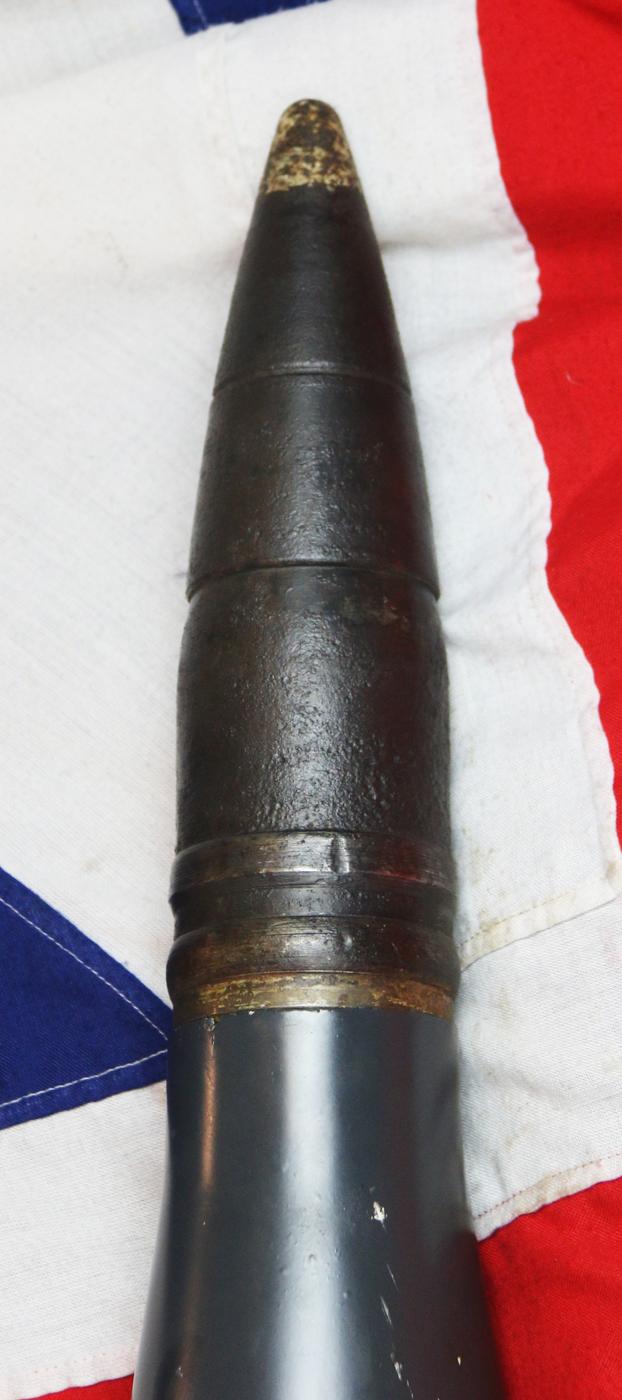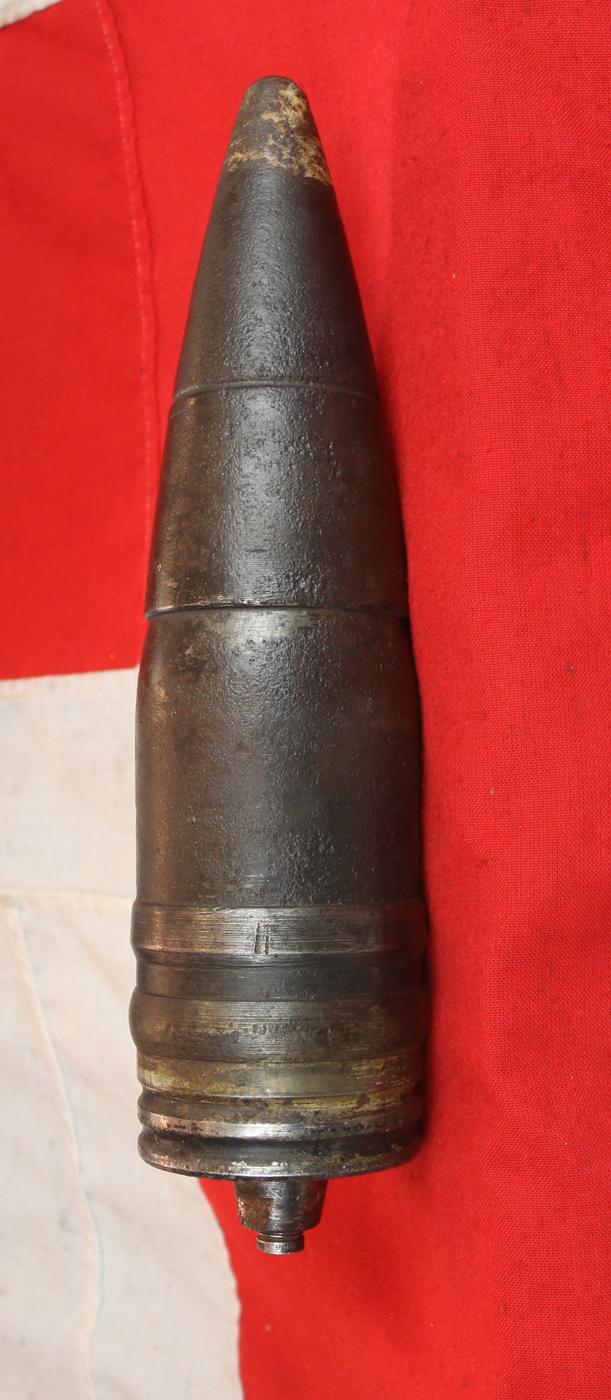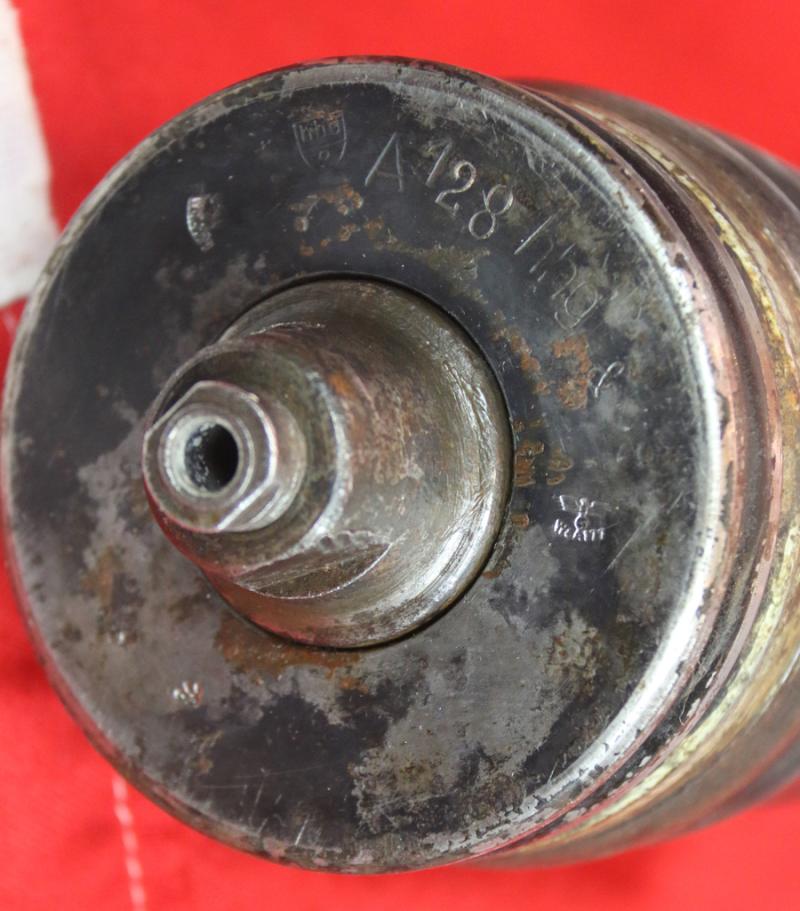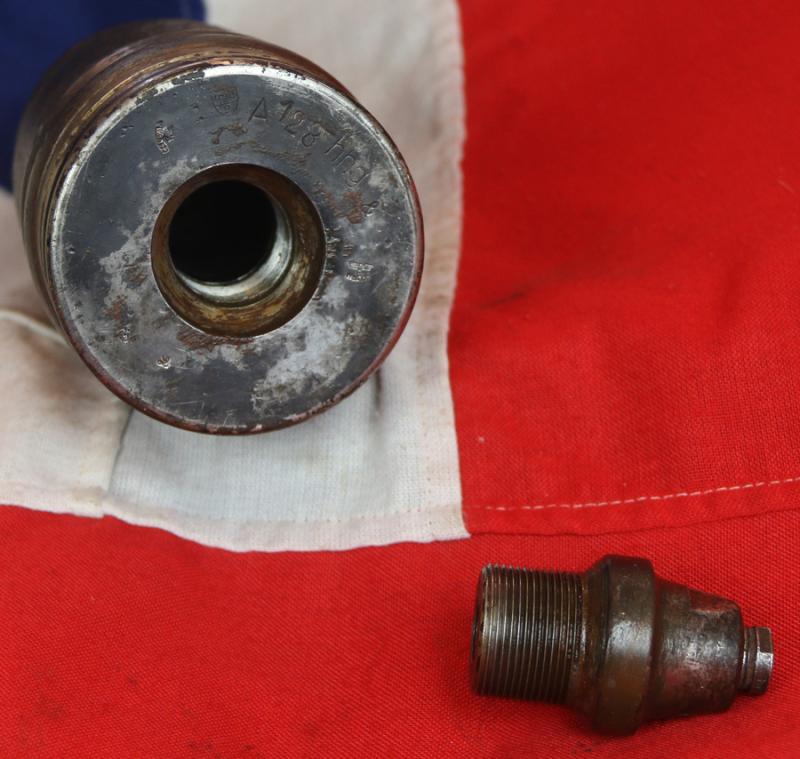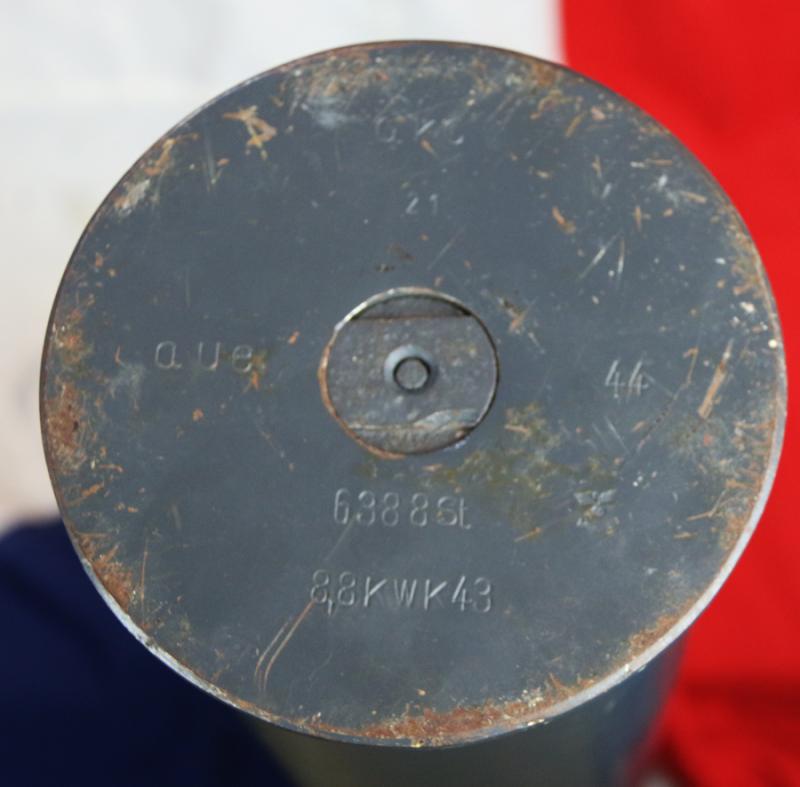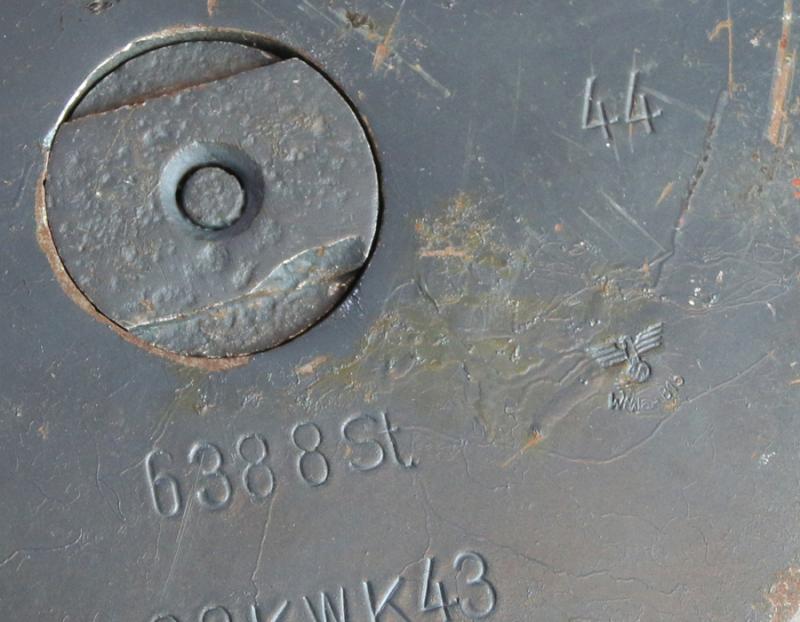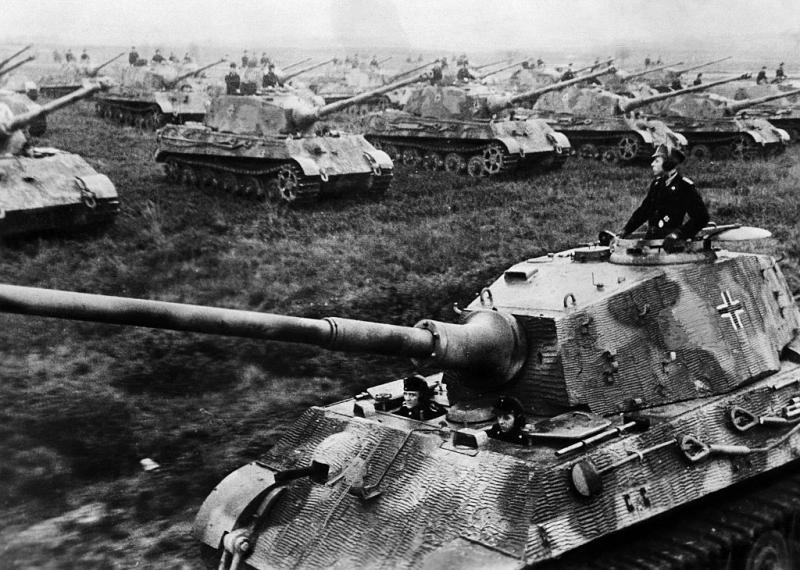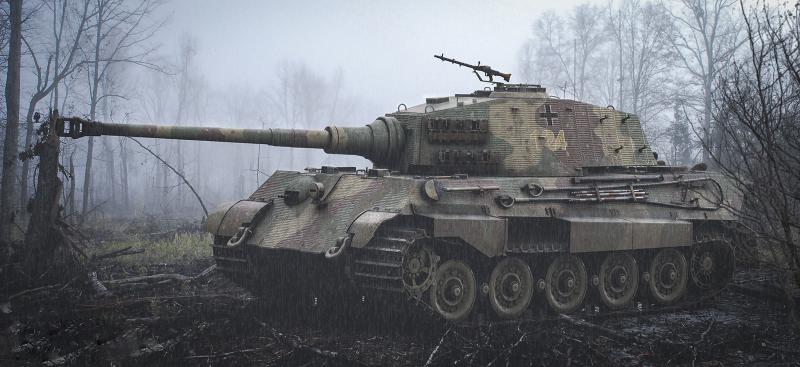A Simply Magnificent and Rare 88mm Round of The German 'King' Tiger II Tank of WW2, Almost Four Feet High
We were delighted to acquire this fabulous example offered here thanks entirely to our last, very rare example, selling recently and its owner asked if we would be interested in his incredible King Tiger shell. He was absolutely right , and naturally, we were thrilled to acquire it.
A wonderful, unique and original souvenir of the greatest tank combat era in history. The WW2 Tiger I tank shells are amazing, but this, the 'King' Tiger II shell is almost beyond belief, and phenomenally rare to survive unfired from WW2.
Likely the only reason it survived was that when repairs were undertaken mid combat the rule was every un-fired shell must be removed from the tank and placed outside of the tank, whereupon once repairs finished they were replaced, but occasionally it is believed some were in the fields undergrowth and were forgotten. Such as in June and July during the post D.day invasion of France.
This one has all its original third reich waffen amt stamps, maker codes, issue date and King Tiger II cannon's issue stamps KWK 43 the code for the KWK 43 88mm gun fitted to 'King' Tiger II. The shell’s head still has its really rare base fuse plug see photos which was designed so there was no means that it could be disarmed by bomb disposal technicians, removal meant detonation with no means to bypass the ignition. The King Tiger is one of the most famous and rarest of the terrifying Panzers. A photo in the gallery is of the German Fuhrer, Adolf Hitler, being shown a demonstration of the King Tiger and a comparison of the size of shells it fired compared to the other battle tanks in production. Of 1500 King Tigers ordered by Hitler only 487 were actually constructed and place into combat service, and this quantity was a tiny amount of tanks produced by Germany in WW2 compared to the numbers of the other standard and various Tiger and Panzer tanks produced. The first use of the Tiger II in combat was in Normandy on 18 July 1944 with the 503rd Heavy Panzer Battalion (schwere Panzerabteilung 503). It was first used on the Eastern Front on 12 August 1944 with schwere PzAbt 501 in the fighting at the Soviets' Baranov bridgehead over the Vistula River. In this action, a single Soviet T-34-85 under the command of Guards Lieutenant Os'kin from the 53rd Guards Tank Brigade knocked out three Tiger Iis by firing at their sides from an ambush position. Later the Tiger II was present at, among others, the Ardennes Offensive, the Soviet offensive into Poland and East Prussia in January 1945, the German offensives in Hungary in 1945, fighting to the east of Berlin at the Seelow Heights in April 1945 and finally within the city of Berlin itself at the very end of the war.
The Sherman-equipped 4th/7th Royal Dragoon Guards claim they were the first British regiment to knock out a King Tiger, on 8 August 1944, in France. The upgraded 88mm armament used a simply huge shell, much larger than the standard Tiger's 88, and one of the most impressive and rarest of all the shells ever to be seen. With electric primers specifically used in armoured vehicles we believe only the fifth example we have had in 45 years, and possibly the last we may ever see. The shell is an amazing 44 inches long, x approx. 6 inches wide at the base. With electric primer specifically used in tanks
Nazi Germany's Tiger is arguably the most famous tank of World War II. With its thick armor and devastating 88-millimeter gun, the Mark VI—or Tiger I—soon earned a devastating reputation on the battlefield.
Designed as a breakthrough tank for breaching enemy defenses, and allocated to a handful of special heavy tank battalions, the sixty-ton Tiger I seemed to have it all: firepower, armor and for an early 1940s vehicle that weighed as much as today's M-1 Abrams, it was fairly agile. With its square, castle-like shape and long cannon, the Tiger I even looked deadly. But Hitler's generals and weapons designers were not satisfied. With Teutonic perfectionism, they complained that the Tiger I's KwK 36 gun was not the most powerful version of the 88-millimeter cannon (not that Allied tankers would have noticed the difference). Even before the Tiger I debuted on the battlefield (floundering in the swamps near Leningrad in an ill-advised attack in September 1942), work had begun on a successor.
Enter the Tiger II, or Konigstiger (King Tiger). At seventy-five tons, it was bigger than its predecessor. Its longer-barreled (and thus higher velocity) KwK 43 88-millimeter cannon could penetrate five inches of armor at a range of two kilometers (1.2 miles). With Sherman and T-34 crews having about two inches of frontal armor between them and eternity, no wonder a supersized Tiger must have seemed the devil on treads.
The Tiger II also featured numerous improvements over the Tiger I. The original Tiger had vertical armor, rather than the more effective sloped armor (effectively increasing armor thickness) found on the T-34 and the later German Panther. The King Tiger had well-sloped armor that was six inches thick on the front hull. Its turret could traverse 360 degrees in nineteen seconds, compared to sixty seconds for the Tiger I, which had theoretically allowed a fast-moving Sherman or T-34 to maneuver behind a Tiger I faster than the German tank's gun could track it.
Not suitable for export. Empty inert and completely safe. Sometime since WW2 the steel case has been re-lacquered over the military grey, and it has numerous surface storage markings
Code: 24212
Price
on
Request


